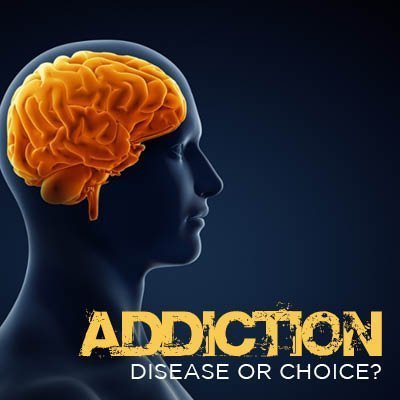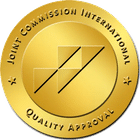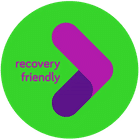
Is Addiction a Disease or a Choice?
The stigma of addiction and drug and alcohol rehab is associated with the misconceptions behind why people suffer from chemical dependency issues. For years, society has attributed addiction to a moral deficiency or weakness in character. This idea has roots as far back as the 18th century. Philosopher Jonathan Edwards claimed desire and will are the same. According to Edwards, “A man never, in any instance, wills anything contrary to his desires, or desires anything contrary to his will.”
Instead of battling opinions and ideas between counter beliefs, today we have the medical technology and research capacity to reach more educated conclusions about addiction.
Advances in neuroscience and imaging technology have allowed the American Medical Association and the National Institute on Drug Abuse to classify addiction as an often-relapsing, chronic disease of the brain that causes compulsive use of mind or mood-altering substances, despite harmful consequences to the suffering individual and to those around. The reward motivation becomes stronger when addiction occurs. Addiction falls under the medical category of Substance Use Disorders.
Roots of The Disease Model
Dr. Benjamin Rush was the first to introduce the idea of the disease model back in 1784. The concept did not gain much traction until much later, when Alcoholics Anonymous was founded in the 1930s. Today, even though most medical professionals agree it’s a disease and there is an entire industry centered in its treatment, society has only begun making progress around the stigma of addiction.
Alcoholics Anonymous, when established in 1935, became the dominant treatment model for addiction.
In Step 1 of the 12 Steps, it states that the addict is powerless over substances, and as a result, their life has become unmanageable.
Isn’t Addiction a choice?
While taking that first drink or drug just to feel good may be a choice, what ensues is an altered state of the brain removing the ability to choose to continue using or stop, regardless of the person’s mental health or consequences the individual may face. This helps us begin to understand: “Is drug addiction a disease or a choice?”
Many compare this to smoking cigarettes for years and developing lung cancer as a result. People don’t question lung cancer or the necessity of treatment. Similarly, a person who kept a diet high in sugar and a result develops diabetes; treatment is still necessary, or this person could have fatal consequences.
What Is Addiction?
Addiction has been said to be extremely complicated to understand, similar to other brain diseases, cancer, and cardiovascular disease. There are, however, characteristics that present themselves consistently among most addicted individuals.
Volkow, Koob, and McLellan (2016), as published in a study from the New England Journal of Medicine, highlighted three main symptoms of addiction:
- Desensitization of the reward motivation circuits of the brain
- Increased conditioned responses related to the substance an individual is dependent upon
- The declining function of brain regions that facilitate decision making and self-regulation
Once addiction symptoms are identified and recognized, scientists have been able to narrow their research capacity to the areas of the brain and chemicals known to be associated with these functions and behaviors.
Brain Physiology of Addiction
The dopamine theory of addiction by Nutt, Lingford-Hughes, Erritzoe, and Stokes shows that many different substances have different chemical effects on the brain but still share certain characteristics that are consistent.
These include both hereditary and physical characteristics as well as a number of compulsive or addictive behaviors.
Hereditary genetic traits were the first to be identified as one of the factors to make an individual more susceptible to developing a chemical dependency after exposure to a rewarding stimulus from alcohol and drugs.
Secondly, repeated exposure to the rewarding stimuli results in physical changes that strengthen dependence by deteriorating brain functions that control self-regulation and the desire to remain abstinent, even when facing dire consequences. These reward stimuli are the neurotransmitters known as dopamine, getting released by chemical substances in the brain, more commonly known as the “high.”
Scientists have been able to identify specific dopamine receptors, known as “D2 receptors,” in the brain that are responsible for the motivation of individuals to forgo instant gratification and instead work towards a larger goal or reward. When these D2 receptors have a lower activity as a result of substances in the brain, we see an increase of impulsive behaviors in the individual, such as short-term instant gratification.
When there is the extended use of drugs and alcohol, these D2 receptors are continuously eroded, forcing the brain to regulate dopamine levels. This explains the need for more and more as an addict continues to use in order to feel the “high.” As these receptors continue to deteriorate, it makes the affected individual more impulsive and thus more likely to continue using regardless of harmful consequences.
The availability of these D2 receptors also determines an individual’s predisposition. Some naturally have fewer D2 receptors, making them more vulnerable to addiction. Those who have higher D2 receptor availability have shown to be much more successful in drug and alcohol rehab treatment programs. This is direct evidence that helps us conclude the question: “Is drug addiction a disease or a choice?”
Addiction Recovery and Treatment
The only solution and treatment to the disease of addiction is total abstinence from all addictive substances. Since addiction is a chronic disease that is progressive and sometimes fatal, treatment is necessary. Effective treatment can help addicts minimize withdrawal symptoms. Relapse plays a big role in addiction, proving sobriety is difficult to maintain.
Drug and alcohol rehab and 12 Step programs can reduce the rate of relapse by identifying intrinsic character traits as well as environmental issues that could contribute to relapse or a return to drug abuse.
The disease model considers addiction a progressive disease that is irreversible, even once achieving total abstinence from drugs and alcohol. Once past traumas, family influences, and other prolonged issues are dealt with in an alcohol and drug rehab facility, daily repetitive treatment is required to keep from relapsing.
GateHouse Treatment, a drug and alcohol rehab with sober living in New Hampshire and Tennessee, offers trauma relief and one-on-one counseling to address behaviors and fears the individual might exhibit. GateHouse allows clients to rebuild a life focused on sobriety and recovery with peer group support and help from expert professionals in the field. Here, clients find inspiration to dive into the recovery process and find the hope they need to make sobriety a way of life.
Please contact GateHouse Treatment today for yourself or a loved one seeking long-term recovery from addiction. Call us at (855) 448-3588.
- Cymbalta Withdrawal: Causes, Symptoms, And Management - October 12, 2023
- Boredom in Recovery: 5 Tips to Avoid Relapse - October 6, 2023
- Overconfidence and Rehab: Avoiding Relapse - October 4, 2023




